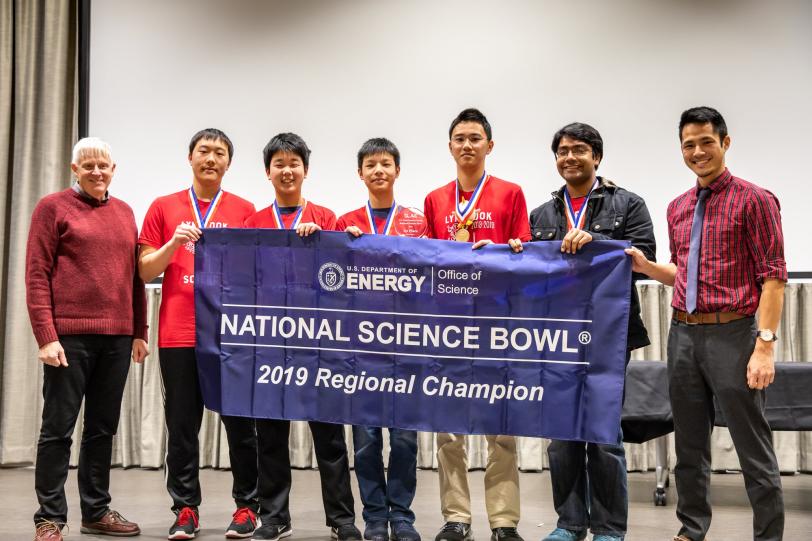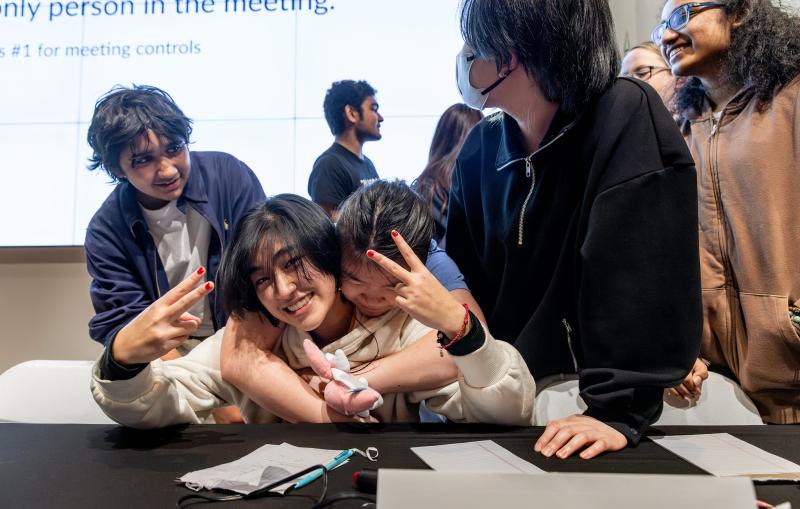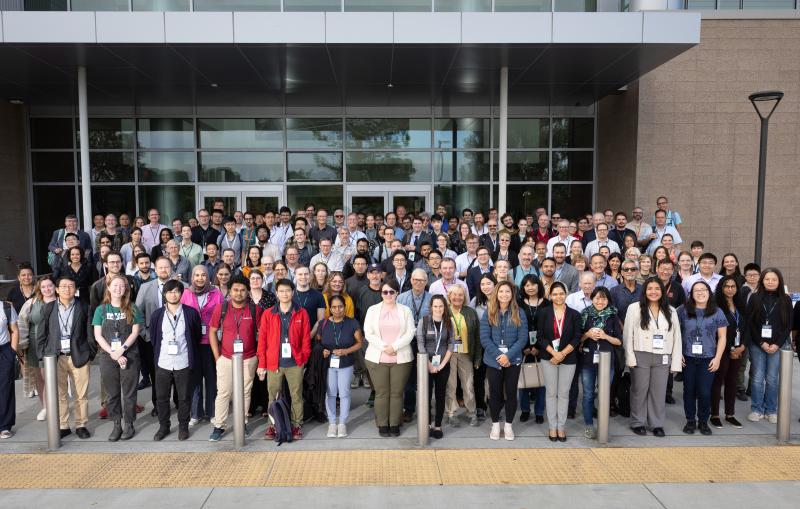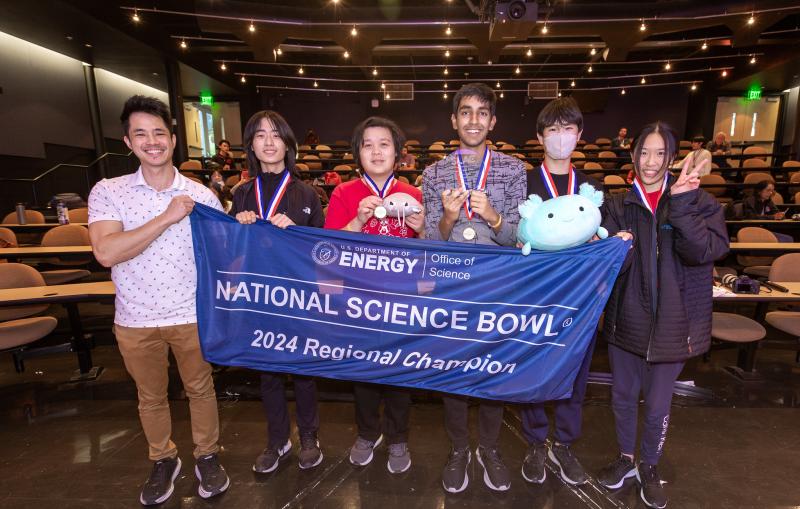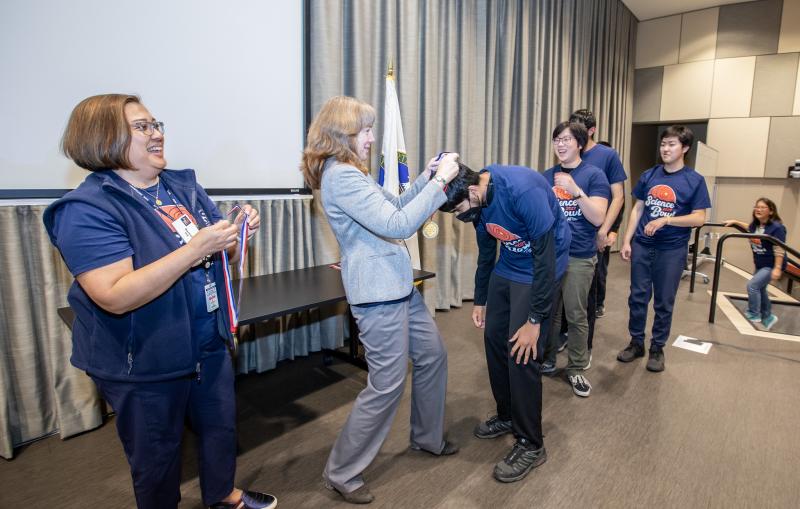Lynbrook High wins 2019 SLAC Regional Science Bowl competition
Twenty-eight teams tested their knowledge of science for a chance to go to the nationals
By Ali Sundermier
Twenty-eight teams from 17 Bay Area high schools faced off Feb. 9 in the SLAC Regional DOE Science Bowl, a series of fast-paced question-and-answer matches that test knowledge in biology, chemistry, physics, earth and space sciences, energy and math. The competition is hosted annually by the Department of Energy’s SLAC National Accelerator Laboratory.
The winner, Lynbrook High School of San Jose, will go on to compete in the 2019 National Science Bowl® (NSB)competition in Washington, D.C., in April.
This was the fifth year in a row that Lynbrook faced off against The Harker School of San Jose. Although Lynbrook came out victorious the first two years, they ended up losing to Harker in 2017 and 2018. This year ends Harker’s winning streak, putting Lynbrook one win ahead in the battle of the brains.
Despite the competitive spirit the NSB brings about in students, Lester Leung, a science teacher at Lynbrook who coached the winning team, says it also inspires collaboration down the line.
“A lot of these students share a love of science and this competition is one of the ways they can express that,” Leung said. “It’s a great medium through which people can interact and connect with each other, and you find a lot of kids afterwards are going to go to the same college or end up being friends. Even though this competition pits teams against each other, in other areas of life they end up collaborating as well.”
Thousands compete nationwide
The Department of Energy created the National Science Bowl® in 1991 to encourage student involvement in math and science activities important to DOE and the nation. This year, more than 9,000 high school students and 4,500 middle school students will compete in 65 high school and 50 middle school regional Science Bowl tournaments. SLAC hosted its first regional in 2005.
This year’s SLAC Regional was coordinated by SLAC Events Specialist Molly Zatarain, Outreach and Events Manager Rachel Isip and Ray Ng, who has helped organize local Science Bowl competitions since 1992, when he was education outreach coordinator at Sandia National Laboratories’ California campus in Livermore. They recruited and trained more than 60 volunteers who served as match moderators, scorekeepers, timekeepers and science judges. Many are SLAC employees or Stanford students who had competed in Science Bowls when they were in high school.
Ng’s son Gregory says he became involved with the Science Bowl in 1992 as a way to bond with his father. In addition to the memories, seeing the joy the competition brings to the students, teachers and volunteers inspires him to continue helping out.
“A lot of it is seeing the students actually be confident in something whereas usually they might be a little more closed off,” he says. “Here they are among people that they can aspire to be.”
In the 16-minute competition rounds, moderators read tossup questions to be answered by the contestant who buzzes in first, as well as bonus questions where the four-person teams collaborate on an answer.
Questions on Saturday covered an extremely wide range of detailed scientific information, including nuclear physics, trigonometric calculations, genetics and DOE national laboratory research programs. DOE provides nine complete sets of practice questions that teams can use to prepare.
Gearing up for Nationals
To get ready for the nationals, Lynbrook team captain Charlie Huang says the team will continue working together and start reading more difficult material to prepare for the questions, which are often about more advanced topics.
“My favorite part of the competition is the teamwork and communication,” he says. “A lot of the problems are difficult to solve so it requires everyone cooperating and pooling their knowledge together.”
The U.S. Department of Energy Office of Science manages the National Science Bowl®, and sponsors the NSB finals competition.
For questions or comments, contact the SLAC Office of Communications at communications@slac.stanford.edu.
SLAC is a multi-program laboratory exploring frontier questions in photon science, astrophysics, particle physics and accelerator research. Located in Menlo Park, Calif., SLAC is operated by Stanford University for the U.S. Department of Energy's Office of Science.
SLAC National Accelerator Laboratory is supported by the Office of Science of the U.S. Department of Energy. The Office of Science is the single largest supporter of basic research in the physical sciences in the United States, and is working to address some of the most pressing challenges of our time. For more information, please visit science.energy.gov.
